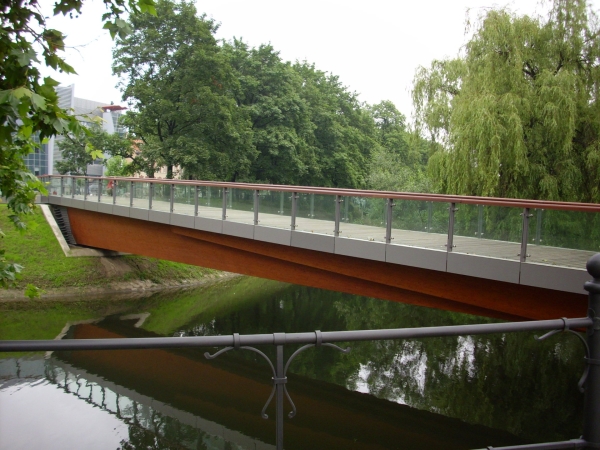Travel /
Traveling around Poland - our photo stories with very personal commentary [225]
Great thread Pawian, thanks!
Thanks. I hope others will also share their photos and impressions.
So, what else did I like in Wrocław?
I liked all the places related to history (my hobby). All the museums, panoramas, cemeteries. etc. Each place can teach us something new and that is invaluable.
The list and photos of main historical sites which I recommend to visit is in another thread:
Or how certain products are made from insects. So far I read about them in adventure books (e.g., how a Polish corsair looted a captured Spanish ship and seized a transport of cochineal which gives us dye
The insect produces carminic acid that deters predation by other insects. Carminic acid, which occurs as 17-24% of the weight of the dry insects, can be extracted from the insect's body and eggs and mixed with aluminum or calcium salts to make carmine dye (also known as cochineal).[1] Carmine is today primarily used as a food colouring and for cosmetics.Polish cochineal (Porphyrophora polonica), also known as Polish carmine scales, is a scale insect formerly used to produce a crimson dye of the same name, colloquially known as "Saint John's blood". The larvae of P. polonica are sessile parasites living on the roots of various herbs-especially those of the perennial knawel-growing on the sandy soils of Central Europe and other parts of Eurasia. Before the development of aniline, alizarin, and other synthetic dyes, the insect was of great economic importance, although its use was in decline after the introduction of Mexican cochineal to Europe in the 16th century.Did you know that shellac is also from insects?
Shellac is a resin secreted by the female lac bug, on trees in the forests of India and Thailand. It is processed and sold as dry flakes (pictured at right), which are dissolved in ethyl alcohol to make liquid shellac, which is used as a brush-on colorant, food glaze and wood finish. Shellac functions as a tough all-natural primer, sanding sealant, tannin-blocker, odour-blocker, stain, and high-gloss varnish. Shellac was once used in electrical applications as it possesses good insulation qualities and it seals out moisture. Phonograph (gramophone) records were also made of it during the pre-1950s, 78-rpm recording era.Władysław Hasior (May 14, 1928 in Nowy Sącz - July 14, 1999 in Kraków) was one of the leading Polish contemporary sculptors connected with the Podhale region. He was also a painter and theatre set designer. His first individual exhibition was in 1961 at the Jewish Theater in Warsaw. Since then his works have been displayed at over seventy individual exhibitions in Poland and Europe..What is the message of this controvercial piece? Jesus was crucified by people like us. We can do it again, if we like, at home.
We met this middle-aged man and a young couple. He asked the warden lady to open one restricted corridor and then elaborated on pics there.
And he told the young ones to appreciate the unusual colours of this painting:
Probably I have no artistic soul because the painting looked ordinary to me. :):):)
Also others they admired were normal to me:
In History of Wrocław museum I liked this tiled room
this china
this garden
and many others. The view of a guilotine blade was rather shocking - Germans used it to behead people in the prison in Nazi Wrocław.
I liked the cemetery of Red Army officers. Those tanks and the monument in the center are impressive.
Many old gravestones are broken
But the reconstruction is taking place
An old notice invites people to come to celebrate the mourning mass for those soldiers, with Roman Catholic, Orthodox and Greek Catholic clergy present. The sentence from the notice: We owe these soldiers are prayers!
I enjoyed finding the traces of war on some houses:
I liked the Gothic churches, although when looking at their groin vaults, one might have a difficulty in telling one from another.
However, the rest of decorations were different
TBC
 PolishForums LIVE / Archives [3]
PolishForums LIVE / Archives [3]

